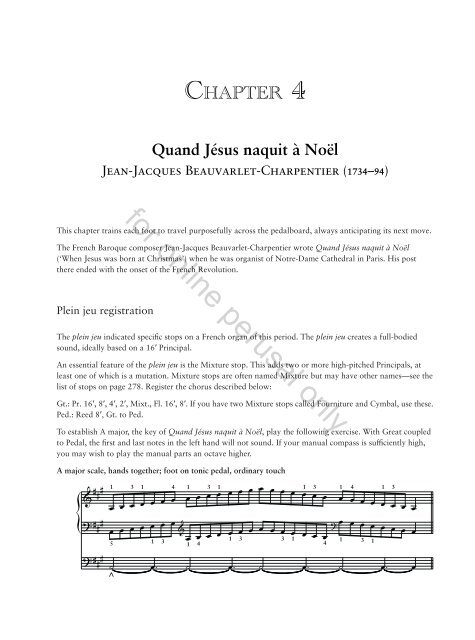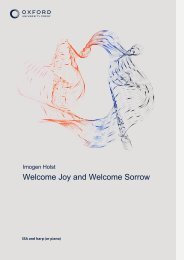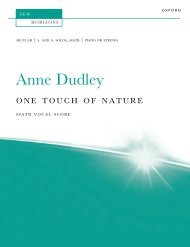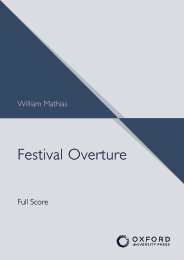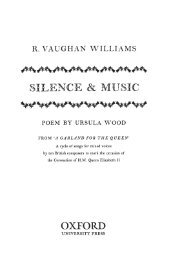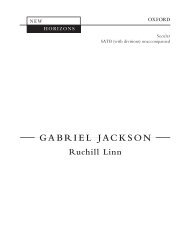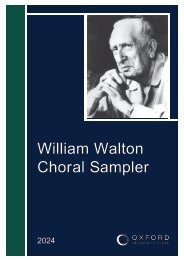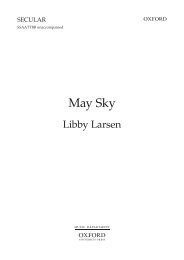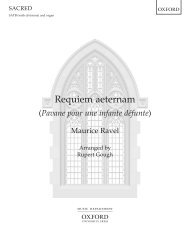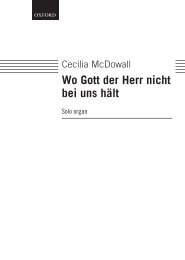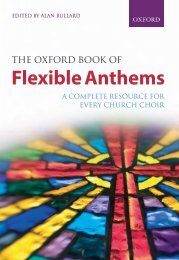New Oxford Organ Method
A single piece of repertoire is the primary focus for each chapter, with preparatory exercises providing the necessary technical work building towards the piece. Each lesson covers four main topics, which are systematically developed: practice methods, registration, fingering and pedalling, and historically-informed interpretation. The method is for keyboard players of any age who are establishing first steps at the organ with or without a teacher. It will also serve more experienced organists who want to improve their technique.
A single piece of repertoire is the primary focus for each chapter, with preparatory exercises providing the necessary technical work building towards the piece. Each lesson covers four main topics, which are systematically developed: practice methods, registration, fingering and pedalling, and historically-informed interpretation. The method is for keyboard players of any age who are establishing first steps at the organ with or without a teacher. It will also serve more experienced organists who want to improve their technique.
- No tags were found...
You also want an ePaper? Increase the reach of your titles
YUMPU automatically turns print PDFs into web optimized ePapers that Google loves.
Chapter 4<br />
Quand Jésus naquit à Noël<br />
Jean-Jacques Beauvarlet-Charpentier (1734–94)<br />
for online perusal only<br />
This chapter trains each foot to travel purposefully across the pedalboard, always anticipating its next move.<br />
The French Baroque composer Jean-Jacques Beauvarlet-Charpentier wrote Quand Jésus naquit à Noël<br />
(‘When Jesus was born at Christmas’) when he was organist of Notre-Dame Cathedral in Paris. His post<br />
there ended with the onset of the French Revolution.<br />
Plein jeu registration<br />
The plein jeu indicated specific stops on a French organ of this period. The plein jeu creates a full-bodied<br />
sound, ideally based on a 16ʹ Principal.<br />
An essential feature of the plein jeu is the Mixture stop. This adds two or more high-pitched Principals, at<br />
least one of which is a mutation. Mixture stops are often named Mixture but may have other names—see the<br />
list of stops on page 278. Register the chorus described below:<br />
Gt.: Pr. 16ʹ, 8ʹ, 4ʹ, 2ʹ, Mixt., Fl. 16ʹ, 8ʹ. If you have two Mixture stops called Fourniture and Cymbal, use these.<br />
Ped.: Reed 8ʹ, Gt. to Ped.<br />
To establish A major, the key of Quand Jésus naquit à Noël, play the following exercise. With Great coupled<br />
to Pedal, the first and last notes in the left hand will not sound. If your manual compass is sufficiently high,<br />
you may wish to play the manual parts an octave higher.<br />
A major scale, hands together; foot on tonic pedal, ordinary touch<br />
{ &# #<br />
# 1 3 1 4 1 3 1 1 3 1 4 1 3<br />
œ œ œ œ œ œ œ œ œ œ œ œ œ œ œ œ œ œ œ œ œ œ œ œ œ œ œ œ œ<br />
?# #<br />
#<br />
?<br />
œ œ œ œ œ œ œ<br />
œ<br />
&<br />
œ œ œ œ œ œ œ œ<br />
œ<br />
œ<br />
œ<br />
œ<br />
œ<br />
œ<br />
œ œ<br />
œ œ<br />
œ<br />
œ<br />
œ<br />
?# #<br />
#<br />
5 1 3<br />
1 4<br />
1 3 3 1<br />
4<br />
1 3 1<br />
˙ œ ˙ œ ˙ œ ˙ œ œ<br />
m


